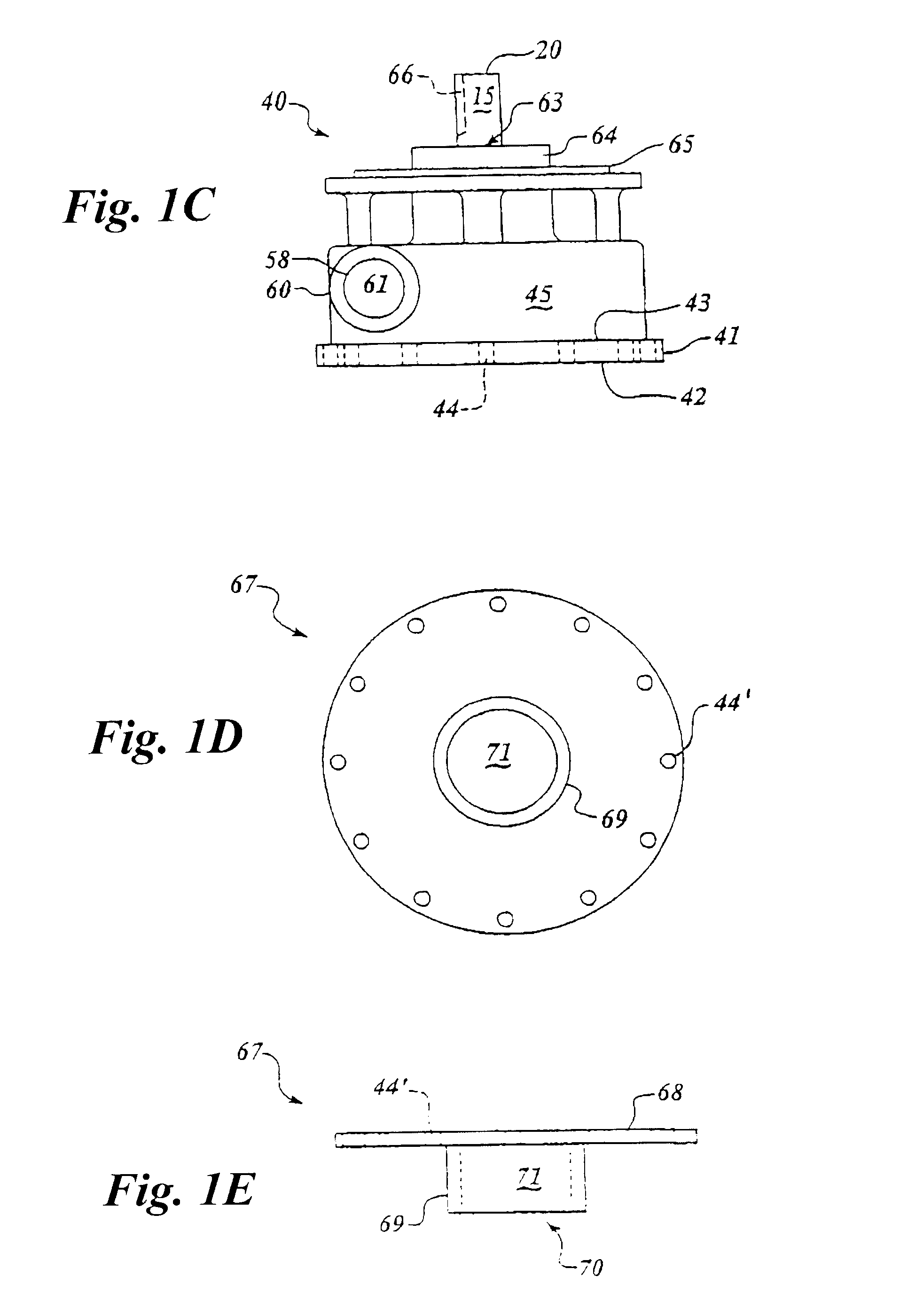Devices and methods for displacing biological fluids incorporating stacked disc impeller systems
- Summary
- Abstract
- Description
- Claims
- Application Information
AI Technical Summary
Benefits of technology
Problems solved by technology
Method used
Image
Examples
example 1
Comparison of Viscous Drag Pump with Conventional Vane-Type Pump in Pumping Viscous Fluid
[0087] A direct comparison of a standard pump, which utilized a typical rotor assembly with vanes, was tested against the a pump of present invention. Two identical ⅛ horsepower 3650 rpm motors were fitted with different impeller assemblies. Pump A possessed a conventional vane-type rotor assembly, and pump B possessed the viscous drag impeller assembly disclosed herein. To determine the comparative efficiency of the two types of pumps, the amount of waste oil pumped over time was monitored. The standard pump was unable to transfer the waste oil and was found to severely overheat during the course of the trial. In contrast, the pump utilizing the viscous drag assembly was able to circulate the oil without strain on the motor.
[0088] To facilitate circulation of the viscous fluid and thereby compare the relative efficiency of the two pump designs, the waste oil was heated to 140° F. The pump equ...
example 2
Comparison of Impeller Assembly with Standard Rotor
[0089] A controlled comparison of a standard rotor and an impeller assembly of the present invention was performed. Two 115 V, ½ hp pump motors (Dayton model # 3K380) were used in this study. One pump was fitted with a conventional rotor pump head (Grainger model #4RH42) having a 3.375″ diameter and a rotor depth of ⅜″, the other pump was fitted with an impeller assembly of the present invention having a 3.375″ diameter, but a 2″ rotor depth. All motors, bases, plumbing, valves and the like were identical. With valves shut and pumps running, both systems used 7.7 amps. Below is a comparison of the two systems.
Comparison of ConventionalStandardImpellerRotor to Impeller AssemblyRotorAssemblyPressure: Valves shut17 psi19 psiOne Valve Open10 psi13 psiBoth Valves Open—10 psiGallons per minute (+ / −5%)24.630One Valve OpenGallons per minute (+ / −5%)—48Both Valves OpenAmp Readings While Pumping8.9 amps10.3 amps
[0090] Further analysis compa...
example 3
Comparison of Impeller Assembly Centrifugal Pump with Standard Centrifugal Pump having a Bladed Impeller
[0091] Several short-term and long-term tests comparing centrifugal pumps (0.5 HP and 1.5 HP) having an impeller assembly of the present invention with standard 0.5 and 1.5 HP centrifugal pumps having a bladed impeller were completed. The tests confirmed that conventional bladed impeller pumps suffer efficiency losses when operated at lower than 50% of maximum system pressure. For example, current consumption went flat when the conventional 1.5 HP centrifugal pump operated under 18 psi (50%). The conventional 1.5 HP centrifugal pump was not usable at pressures under 18 psi and wasted energy. The 0.5 HP centrifugal pump incorporating the impeller assembly of the present invention performed well, providing durability and silent operation. Even when operated at pressures of 2.45 psi, the output water was clear. The conventional bladed impeller pump produced aeration at 8 psi and was...
PUM
 Login to View More
Login to View More Abstract
Description
Claims
Application Information
 Login to View More
Login to View More - R&D
- Intellectual Property
- Life Sciences
- Materials
- Tech Scout
- Unparalleled Data Quality
- Higher Quality Content
- 60% Fewer Hallucinations
Browse by: Latest US Patents, China's latest patents, Technical Efficacy Thesaurus, Application Domain, Technology Topic, Popular Technical Reports.
© 2025 PatSnap. All rights reserved.Legal|Privacy policy|Modern Slavery Act Transparency Statement|Sitemap|About US| Contact US: help@patsnap.com



